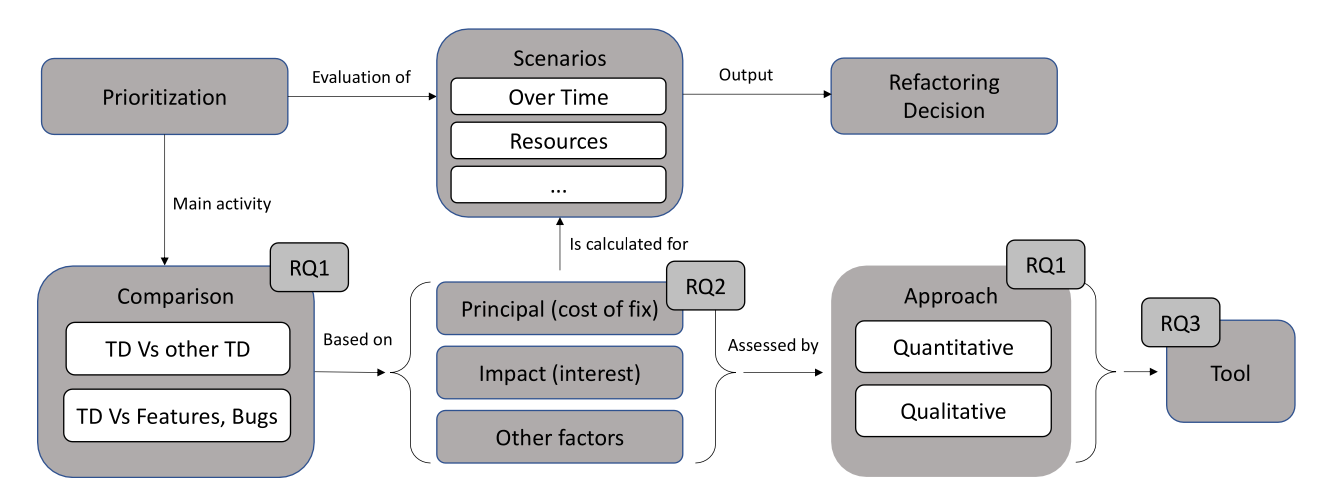RDEL #48: What are the top technical debt strategies, processes, factors, and impact metrics?
This week, we dive into a review of dozens of papers to establish the most well-known strategies, processes, factors, and metrics used for technical debt management.
Welcome back to Research-Driven Engineering Leadership. Each week, we pose an interesting topic in engineering leadership, and apply the latest research in the field to drive to an answer.
For as long as teams have been building software, technical debt has been an omnipresent experience. So what does the literature say on the top strategies, processes, factors, and metrics that are used to manage technical debt?
The context
Technical debt describes the future costs incurred due to expedient but suboptimal decisions made during the development process. These decisions may include taking shortcuts to meet deadlines or using less-than-ideal solutions that require future refactoring or replacement. While these shortcuts can provide immediate benefits, such as faster release times, they accumulate interest in the form of increased maintenance efforts, reduced code quality, and potential system failures. Over time, if not managed properly, technical debt can hinder productivity, innovation, and the overall health of a software project.
We previously covered how technical debt impacts engineering morale, as well as a case study of how engineering teams manage technical debt. In this study, we zoom out and examine existing literature on the strategies, processes, factors, and tools used to prioritize technical debt.
The research
Researchers conducted a review on the existing literature covering the strategies, processes, factors, and tools used to prioritize technical debt. The researchers used a systematic literature review (SLR) to identify, evaluate, and synthesize research findings from numerous studies on this topic. Their findings are a summary of dozens of studies before them.

Strategies:
Researchers identified the different technical debt strategies that are used to align both technical and business goals:
Cost-benefit analysis involves evaluating the potential benefits of addressing technical debt against the costs involved. This helps in determining whether the effort to eliminate the debt will result in significant improvements.
Risk assessment focuses on identifying the potential risks associated with different technical debt items, such as the likelihood of system failures or security vulnerabilities, and prioritizing them based on the severity of these risks.
Value-based prioritization assesses the impact of technical debt on delivering business value, prioritizing debt that hinders the achievement of key business objectives.
Processes and factors:
The study assessed the most popular processes for managing technical debt into the following types:
Regular technical debt reviews involve periodic assessment meetings where the team identifies and discusses current technical debt items, their impact, and potential solutions.
Automated code analysis tools can scan codebases to detect technical debt automatically, providing real-time feedback to developers.
Stakeholder consultations are crucial as they bring in perspectives from various parties involved in the project, ensuring that technical decisions consider business and user needs.
Key factors influencing the prioritization of technical debt include the severity of the debt (how critically it affects the system's functionality), its impact on business goals (how it affects the project's ability to meet business objectives), and the ease of resolution (how straightforward it is to address the debt).
Tools:
The study found a variety of tools available to assist in the identification and prioritization of technical debt, and categorized them into two types:
Static code analyzers that can automatically identify code issues that contribute to technical debt, providing developers with immediate insights.
More advanced debt management frameworks that integrate into CI/CD pipelines and offer ongoing monitoring and management of technical debt as part of the development workflow.
Impact metrics:
The research identified specific metrics that are used to assess the urgency and importance of addressing technical debt. These metrics include:
Frequency of code changes indicate how often the codebase is modified and potentially how much technical debt is being introduced.
Defect rates measure the number of bugs or issues in the code, reflecting the impact of technical debt on software quality.
System performance indicators, such as response times and resource utilization, provide insights into how technical debt affects the system's efficiency and reliability.
The application
When determining what technical debt strategy is right for a team, engineering leaders should consider the different standard approaches, and adopt a structured approach that works for their team’s unique style.
Broadly speaking, implementing regular technical debt assessments and using a combination of the identified prioritization strategies can help teams make informed decisions about which debt to address first. For example, integrating automated tools into the CI/CD pipeline can continuously monitor and report on technical debt, making it easier to manage over time. Furthermore, involving stakeholders in the debt prioritization process ensures that business objectives align with technical improvements, ultimately leading to better project outcomes.
By systematically addressing technical debt, teams can maintain higher code quality, reduce maintenance costs, and improve overall software performance and developer productivity.
—
We hope this study gives engineering leaders the right tools to tackle technical debt. Happy Research Monday!
Lizzie

